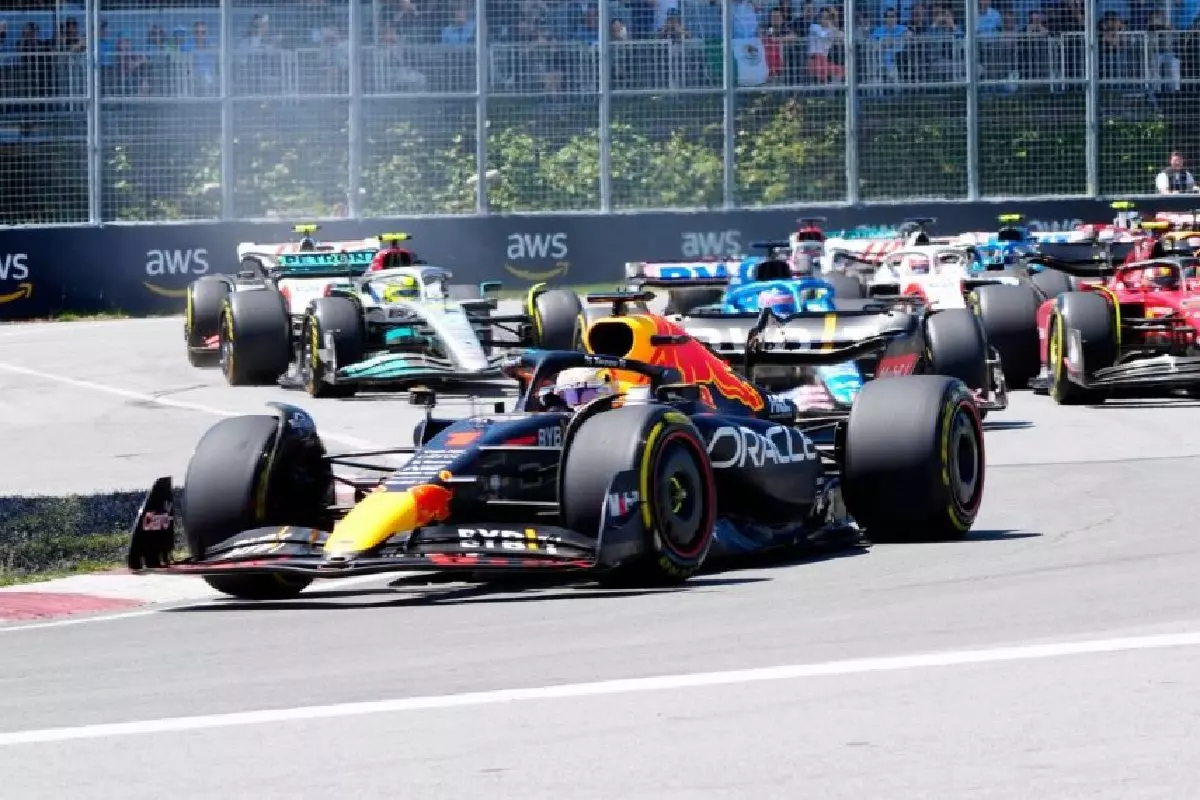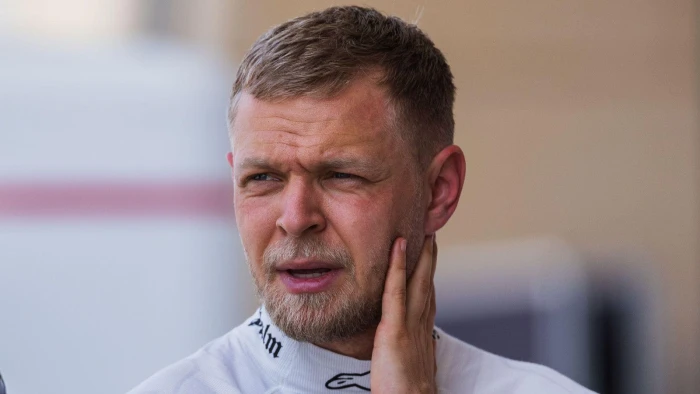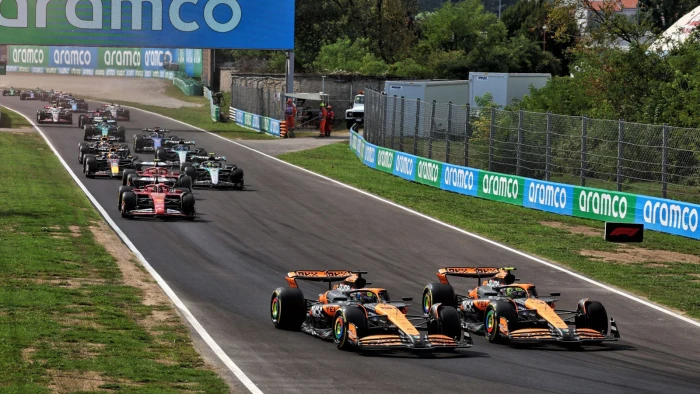How fast are F1 cars compared to IndyCar, NASCAR, Formula 2, MotoGP and more

Red Bull Max Verstappen at Canadian GP
Formula 1 is often referred to as the pinnacle of motorsport.
For most racing drivers, reaching Formula 1 represents the ultimate career ambition, the chance to reach the top of the motorsport ladder and drive the most technologically-advanced racing machines around.
But just how fast are the cars in Formula 1 compared to those found in rival series. Planet Sport has the answers…
Formula 1
Let's start then with the Formula 1 machinery, capable of hitting a top speed way north of 200mph.
Valtteri Bottas in fact holds the record for the highest speed in race trim, an incredible 231.4mph reached at the Mexican Grand Prix back in 2016.
The highest overall top speed achieved goes to Honda though, who pushed their 2006 challenger, the RA106, to a mighty 246.9mph at the Bonneville Salt Flats.
A current Formula 1 car can launch from zero to 60mph in roughly two-and-a-half seconds, but it is in the corners where a Formula 1 car truly excels and makes the difference with lap times.
Such is the range of corners that a Formula 1 challenger will negotiate, it is difficult to pinpoint an absolute maximum speed, but a figure of around 190mph is very much achievable.
Drivers for example can reach speeds of up to 192mph when tackling the 130R corner at Suzuka.
IndyCar
The machinery in IndyCar is actually consistently seen hitting top speeds higher than what Formula 1 cars can achieve, with the latter taking back chunks of time in the corners, while 0-60 in IndyCar typically takes half-a-second longer than it does in Formula 1.
It comes as no surprise to hear that IndyCar challengers hit their peak speeds when racing on oval tracks, where the accelerator pedal rarely comes up off the floor.
It takes a trip back to 1996 though to find the outright record for an average speed, arriving at the famed Indianapolis 500.
The honour goes to Aerie Luyendyk, who averaged a whopping 236.986mph in qualifying that year.
Formula 2
Formula 2 is a spec series, meaning that all teams are supplied with the same car by Dallara, one which is a good chunk slower than Formula 1 machinery.
That is to be expected of course, as Formula 2 is the final step on the junior ladder before the big leagues of Formula 1.
Liam Lawson, meet 'Hammertime' ??#AustrianGP #F2 @LiamLawson30 pic.twitter.com/HFqKnl2UHg
— Formula 2 (@Formula2) July 10, 2022
With Formula 2 competing as part of the F1 support schedule, it allows for a direct comparison between the cars at a specific track.
Most recently in Austria, Frederik Vesti set a 1:14.123 to claim pole at the Red Bull Ring in the F2 class, while in F1, a 1:04.984 was Max Verstappen's pole time.
According to Formula 2's data, pushing flat out, with the aid of DRS and in the lowest downforce set-up which is used at Monza, a Formula 2 car would peak at around 208mph.
The cars can go from 0-60mph meanwhile in 2.9 seconds, not too dissimilar to the Formula 1 cars which excel as their aerodynamics kick in and the corners arrive.
Formula 3
Formula 3, like Formula 2, is also a spec series and acts as a feeder for talent looking to move into F2.
As such, there is a performance difference between the two Dallara cars, albeit not to the level seen between Formula 2 and Formula 1.
The opening seconds of the Sprint! ?♂️?♂️?♂️#AustrianGP #F3 pic.twitter.com/qaij27mL4m
— Formula 3 (@FIAFormula3) July 11, 2022
An F3 car will reach a top speed of 186mph according to the official data, 22mph down on its F2 counterpart and 45mph slower than the peak speed of an F1 car.
0-60mph in an F3 car meanwhile takes 3.1 seconds.
NASCAR
Switching away from single-seaters for now, the V8-powered, American muscle NASCAR machines certainly pack a punch with their performance.
NASCAR challengers, weighing in at around double the mass of a Formula 1 car, can reach maximum speeds pushing 200mph, though the cars are capped in that department for safety reasons, with a 0-60mph time of around three-and-a-half-seconds.
The Formula 1 cars triumph over NASCAR here then, though it is rather impressive that stock cars with all that weight can reach a higher speed than a far lighter F3 car.
World Endurance Championship
WEC machinery is not the easiest to compare against Formula 1, as the aim of the series is to keep the pack relatively bunched up, so like NASCAR, speed caps are in place.
Porsche, though, took it upon themselves to give us a demonstration of what their car could do after they had left the WEC and all limitations were gone.
The Porsche 919 Hybrid Evo shattered the lap record at Spa, Neel Jani clocking a 1:41.77, hitting a speed of 223.1mph down the Kemmel Straight.
It was not until qualifying for the 2020 Formula 1 Belgian Grand Prix that this time was bettered, Lewis Hamilton claiming pole with a 1:41.252.
Timo Bernard then drove the Porsche 919 Hybrid Evo to smash Stefan Bellof's record time at the Nürburgring Nordschleife, a 6:11.13 which had stood as the ultimate benchmark since 1983.
With Bernard delivering a 5:19.54, the old record had been annihilated.
As for the official machinery competing in the WEC, Rebellion Racing's Bruno Senna has managed to hit 216mph, so Formula 1 cars certainly have the edge in that regard.
Formula E
Formula E came into existence with the goal of pioneering a move to electric-powered motorsport, so how do the all-electric challengers compare to Formula 1's hybrid beasts?
Well, it is not the easiest comparison to make, as Formula E races almost exclusively on temporary street tracks which are not designed for lightning-fast speeds.
Nonetheless, Formula E's current Gen2 car, boasting 250 kilowatts of power, can reach a top speed of 174mph, according to information from the series.
Their acceleration is more impressive, though, with 0-60 mph possible in 2.8s, roughly 0.3s slower than a Formula 1 car but faster than F2 and F3 machinery.
MotoGP
Let's move on from four wheels and check out how a Formula 1 car compares to the two-wheeled MotoGP bikes.
Jorge Martin holds the current record for top speed hit, reaching 226mph at Mugello in 2022, that actually coming after Suzuki boss Shinichi Sahara had expressed concerns over the straight-line speeds which MotoGP bikes were becoming capable of.
Did you ever wonder what it's like to ride a #MotoGP bike for the first time?
— MotoGP™? (@MotoGP) July 19, 2022
This is how @DarrynBinder40 describes it! ? pic.twitter.com/27VqRPHa3H
From 0-60, a MotoGP bike can do that in 2.6s, so in a direct race to 60 with a Formula 1 car, they would be effectively neck-and-neck.
A Formula 1 car is still king through the corners, putting all of that downforce to good use.
There are several venues visited by both Formula 1 and MotoGP, the Circuit de Barcelona-Catalunya being the most recent example.
Aleix Espargaro set a 1:38.742 to claim pole for MotoGP's 2022 Catalan Grand Prix, compared to Charles Leclerc's Formula 1 Spanish Grand Prix pole time of a 1:18.750 a few weeks prior.






